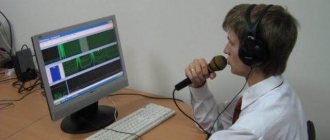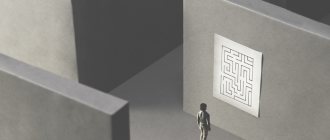Stuttering - symptoms and treatment
At what age is it best to start treatment in children?
Treatment for stuttering should begin immediately after diagnosis.
Treatment of stuttering, as a rule, is complex, staged and quite long. Several specialists must participate in it.
A neurologist or psychoneurologist is a doctor with a higher medical education as a neurologist who has completed courses in psychiatry. He prescribes appropriate drug therapy based on the state of the nervous system and monitors the dynamics of the development of symptoms of the disease.
A psychotherapist is a specialist with a higher medical education who deals with therapeutic effects on the human psyche. He uses different types of psychotherapy, including direct talking, hypnosis and a number of other stuttering treatment techniques:
- Subpersonal analysis . This approach considers elements of behavior as internal images that are perceived by the human consciousness as parts separate from the personality itself. A person’s subpersonalities are tied to his family, social, professional roles (for example, the role of a parent, daughter/son, boss, colleague, etc.). Using this technique, a psychotherapist tries to reveal the traits and manifestations of a stutterer’s subpersonalities when he conducts his internal dialogue, and tries to change pathological behavioral traits, neutralizing stuttering.
- NLP (neurolinguistic programming) is a series of psychological techniques that make it possible to influence the subconscious of a stutterer, changing his thinking and behavior through the introduction of special linguistic programs (attitudes) into his consciousness.
- Working with toys as breathing exercises. For training, soap bubbles, spinning toys, etc. are used. In this case, the child is asked to blow through a straw, blowing bubbles into the water, blow on dandelions and boats in the water, inflate balloons, etc.
- Autotraining is a self-hypnosis technique through which you can change character traits and bad habits.
An acupuncturist is a specialist with a higher medical education as a neurologist or neurologist who has undergone special training in acupuncture. It affects special points and nerve endings, relieving nervous tension.
A psychologist conducts testing, helps to establish the cause of a speech defect and deal with a person’s internal problems, identifying the weaknesses of his character. To do this, he uses verbal methods of influence.
A speech therapist teaches a person who stutters to breathe correctly during speech, use his voice, articulate easily, and speak smoothly and rhythmically [18][19][20][21].
The physical therapy instructor develops health-improving activities, which include hardening procedures, therapeutic massage and physical education. This strengthens the human immune system and allows one to “dump off negative accumulated energy” through increased muscle activity [13][16].
Although each specialist makes an important and invaluable contribution to the treatment of stuttering, none of them can eliminate it completely on their own.
Eliminating stuttering in preschoolers
In children, stuttering goes away on its own, even without treatment. In this case, you should reduce the load on the baby’s speech apparatus, and also from time to time visit specialists who will monitor the development of speech dynamics.
Eliminating stuttering in adolescents and adults
The older a child gets, the less chance there is of completely eliminating his stuttering. In adolescence, stuttering is difficult to correct. The main goal of treatment is to teach relaxation skills and the ability to maintain a positive attitude, maintain constant confidence in yourself and your abilities, and use techniques to increase self-esteem.
An adult has often already adapted to his own speech characteristics or learned to control them. The main goal of stuttering treatment is to reduce stress, as stress can make stuttering worse.
New techniques for treating stuttering
Examples of devices and computer programs for stuttering treatment:
- SpeechEasy - worn in one ear and looks like a hearing aid. Changes the sounds passing through the device so that the patient hears his voice with a slight time delay and in a different key. As a result, stuttering sharply decreases or disappears.
- AKR-01 “Monologue” - also reproduces speech with a delay, creating an echo effect.
- BreathMaker and Cafet are computer training programs for stuttering treatment.
Stuttering, logoneurosis, hesitation in speech, dysrhythmia
Stuttering in children is a disorder of the tempo-rhythmic aspect of speech caused by repeated convulsions in the articulatory, vocal or respiratory parts of the speech apparatus. Stuttering in children is characterized by “getting stuck” on individual sounds, their repeated, involuntary repetition, accompanying movements, speech tricks, logophobia, and vegetative reactions.
Neurological therapy classes for the correction of stuttering in our center can be based on various author’s methods: Cheveleva, Vlasova and Rau, Shklovsky, Volkova, Mironova, etc. The main methods of speech therapy work for stuttering are breathing-vocal gymnastics, relaxation of tense articulatory muscles, speech exercises on rhythmization of speech, normalization of its tempo, development of expressive speech intonation, logorhythmic exercises.
Children with stuttering, logoneurosis, and even hesitations in speech must be examined by a neuropsychologist and speech therapist.
Competent correction of stuttering, which leads to sustainable results, must necessarily include a neurocorrectional set of measures (neuropsychological correction, neuroacoustic programs) and a system of “correct” speech therapy classes.
Stuttering in children is unintentional stops and hesitations in oral speech that arise as a result of a convulsive state of the speech muscles.
It must be remembered that in addition to speech spasms, stuttering in children is accompanied by a disorder of higher nervous activity, which in some cases may be associated with a neurotic reaction, in others with organic damage to the central nervous system. Therefore, it would be wrong to consider stuttering in a child as a purely speech problem; The study and correction of stuttering in children is impossible without the integration of knowledge from the field of neuropsychology and the development of brain areas.
This is where the root of problems with speech hesitations lies.
Depending on the pathogenetic mechanisms underlying stuttering, there are 2 forms of stuttering in children: neurotic (logoneurosis) and neurosis-like. Neurotic stuttering in children is a functional disorder; neurosis-like is associated with organic damage to the nervous system and brain.
In the most extreme cases, stuttering can make speech and communication nearly impossible. The severity of stuttering may vary for the same child in different situations.
Depending on the nature of the course, the following variants of stuttering in children are distinguished:
- wavy (stuttering increases and decreases in different situations, but does not disappear);
- constant (stuttering has a relatively stable course)
- recurrent (stuttering occurs again after a period of speech well-being).
Children who stutter often exhibit enuresis, night terrors, increased anxiety and vulnerability. Therefore, ignoring stutters and “running” this problem is DANGEROUS.
Perinatal brain damage in children can be associated with toxicosis of pregnancy, hemolytic disease of the fetus, intrauterine hypoxia and asphyxia during childbirth, birth injuries - and all this can subsequently lead to stuttering and hesitation in speech.
Children who are physically weak, with an underdeveloped sense of rhythm, general motor skills, facial expressions and articulation are more susceptible to the development of stuttering.
The increase in the incidence of stuttering is directly related to the introduction of computer games and various computer technologies into everyday life, which unleash a huge flow of audiovisual information on the fragile nervous system of children.
It should be remembered that the processes of maturation of the cerebral cortex and the formation of functional asymmetry in brain activity are generally completed by the age of 5, therefore exposure to any stimulus that is excessive in strength or duration can lead to a nervous breakdown and stuttering in children.
The immediate causes of stuttering in children also include immediate mental shocks or long-term mental trauma.
Stuttering in children can be caused by imitation of people who stutter, overload with complex speech material, and retraining to be left-handed. Experts point to the connection between stuttering in children and left-handedness and other speech disorders (dyslalia, tachylalia, dysarthria, rhinolalia). Secondary stuttering in children can occur against the background of motor alalia.
In the case of neurosis-like stuttering, which occurs against the background of organic damage to the central nervous system in the perinatal or early period of child development, the disorder develops gradually. Neurosis-like stuttering in children appears from the moment speech begins or at the age of 3-4 years, i.e. during the period of formation of phrasal speech.
Children with neurosis-like stuttering have impaired general motor skills : their movements are awkward, constrained, and stereotyped. Characterized by sluggish facial expressions and poor handwriting; Dysgraphia, dyslexia and dyscalculia often occur. The course of neurosis-like stuttering in children is relatively constant; Speech deterioration can be caused by fatigue, increased speech load, and somatic weakness.
How to treat
Treatment is carried out jointly with a psychologist, neurologist and speech therapist.
A mandatory component of therapy is sessions with a speech therapist. The specialist selects an individual stuttering correction scheme. First you need to eliminate the old speech stereotype: fast intermittent speech, repetition of words and syllables. The speech therapist teaches the child to relax in order to develop the skill of fluent speech. In this way, a new speech stereotype is created. In the future, it is reinforced by exercises with repetition of sounds, syllables, words, sentences and the whole text.
If the cause is a chronic traumatic situation, it must be eliminated. A psychologist or psychotherapist works with the child. Psychotherapy sessions, psychocorrection, art therapy, and music therapy are conducted. These methods help to relax and change the little patient’s attitude towards his condition. They are also a preventative against secondary speech disorders. The speech therapist teaches the child to relax in order to develop the skill of fluent speech.
It is important to motivate the child so that he has a desire to study. This way he will try harder.
When the cause of the neurotic form of stuttering in children is conflicts in the family, family counseling and therapy are indicated for all family members. Relatives need to develop the skill of self-control, because for the child to recover, he needs a favorable and calm home atmosphere. Those around you also need to monitor their speech: it should be clear, calm, and in a friendly tone.
Parents need to understand that treatment is not limited to the speech therapist's office. You also need to work with your child at home. In this case, it is necessary to take into account the emotional state of the baby.
Problems related to neurology are solved with medications: sedatives, nootropics, vitamin complexes. The doctor may prescribe physical therapy, massage, and reflexology.
In difficult cases, hypnotherapy is indicated.
Exercises for neurotic stuttering
The number of classes and their duration depend on the age of the child and the severity of the pathology. Typically the session lasts 15 – 20 minutes.
The complex begins with a warm-up - breathing exercises to increase the volume of exhaled air so that the baby can construct long phrases:
- The baby lies on his back and pretends to be the sea with his stomach - inhales through his nose, inflates his tummy, and exhales through a tube. The exercise must be done three times;
- The child blows on the water in a glass through a straw, depicting a storm, a scuba diver or boiling water;
- Boats made of paper are launched into a basin of water, or any toys can serve as boats. You need to blow on the boats so that they float to the other end of the basin.
Exercises can be supplemented with pronunciation of words or sentences. At the same time, you pronounce the words and ask the baby to do the same. Speak slowly and maintain rhythm.
The next exercise is “echo”. You say the word, the child repeats after you.
Guessing riddles, composing oral stories based on drawings, and learning songs are useful for speech development. By the way, singing allows you to achieve smooth pronunciation. It is recommended to be used in everyday life. For example, some word seems difficult for you to pronounce. Try singing it: singing relieves the spasm and you will notice that you can pronounce the word easily.
Drawing, modeling, weaving, and origami have a positive effect. It is known that fine motor skills are related to speech. Such activities are recommended even for healthy children. And for children with neurotic stuttering, they will help improve coordination and articulation.
Course of the disease
A characteristic feature of the dynamics of speech impairment of this form is a recurrent course. At times, hesitation disappears completely and the conversation becomes smooth, but the slightest fatigue, emotional stress or somatic illness provokes hesitation.
The neurotic form is:
- Progressive;
- Recurrent.
The severity of the speech defect is not severe if the course is favorable, but otherwise it can become chronic and lead to more severe manifestations.
What is neurotic stuttering
Neurotic stuttering develops as a result of tonic-clonic and tonic convulsions of the articulatory muscles. A spasm occurs in the muscles that participate in conversation: the tongue, larynx, and soft palate.
The provoking factor is stress and psychological trauma in childhood. It usually occurs at 4–5 years of age, when children begin to actively talk. However, it can develop both at an earlier and at an older age.
The most common causes of neurotic stuttering are the following situations:
- chronic stress - conflict in the family or with peers;
- physical illness and associated complexes;
- lack of mutual understanding with parents, practice of physical punishment on their part;
- acute mental trauma - anger, fear, fear, stress.
Another reason is heredity. From birth, such children have a functional deficiency of the speech apparatus, which ultimately leads to stuttering. Therefore, you must not lose your vigilance: do not allow emotional overstrain or stress. Education and communication should be based on parents’ complete control of their emotions: do not lash out at the baby, do not yell at him or scold him. Try to find compromises and resolve issues with care and love.
In some families, parents tend to speed up the child’s development, including speech. The child is constantly dealt with and has increased demands that do not take into account individual characteristics. They load him with reading, force him to learn complex words and poems. Obviously, this is an unbearable physical and mental load. Sooner or later, this reason leads to a breakdown, hysterics, including speech impairment.
If there is already a person in the family who stutters, the child can imitate him.
How to get rid of stuttering
Without treatment, stuttering progresses. The child is afraid to speak, and with age he begins to develop complexes and avoids communicating with peers.
Before starting treatment, it is necessary to examine the child and find out the nature of the defect. If there is damage to the central nervous system, the help of a pediatric neurologist is needed, but if stuttering is caused by a traumatic situation, work with a psychologist is needed. A speech therapist will help you cope with speech defects.
Treatment for stuttering includes:
- speech therapy exercises - to set the rhythm and timbre of the voice, the tempo of speech;
- breathing exercises - to get rid of anxiety, tension, fear of communication.
- the use of special computer simulator programs, the result is the same as when working with a speech therapist;
- drug therapy – for neurological disorders;
- acupressure;
- hypnosis;
- physical therapy.
An integrated approach gives the best results. And the specific methods of treatment should be selected by the doctor.
Classification of stuttering:
Kinds:
- organic - neurosis-like, stable. More often with mental retardation and dysarthria.
- functional, neurotic - logoneurosis, logophobia, sometimes good, sometimes bad. Connection with stress.
By localization of stutters:
- articulatory
- voice
- respiratory.
There are all 3 types: breathing incorrectly when speaking and the tongue does not obey
Also distinguished:
- Clonic - repetition of sounds P-p-p - Petya
- Tonic - pulls out the sound...
- Mixed
- Expiratory - cannot exhale for a long time
- Inspiratory - unable to breathe.
Diagnostics
The diagnosis is made after a complete examination of the child with the participation of a speech therapist and a neurologist. If necessary, other specialists are involved: defectologist, psychologist, psychotherapist.
The following diagnostic stages are distinguished:
- Determining the tempo, rhythm and fluency of speech, the presence of deviations in these indicators;
- Identification of a traumatic situation;
- The exclusion of another form of stuttering - neurosis-like, which occurs after a traumatic brain injury and other lesions of the central nervous system, is accompanied by a change in personality.
To clarify the diagnosis, an EEG, REG, MRI or CT scan is performed. Hardware diagnostic methods make it possible to identify structural or functional changes in the central nervous system, if any, and to exclude or confirm neurological problems.









